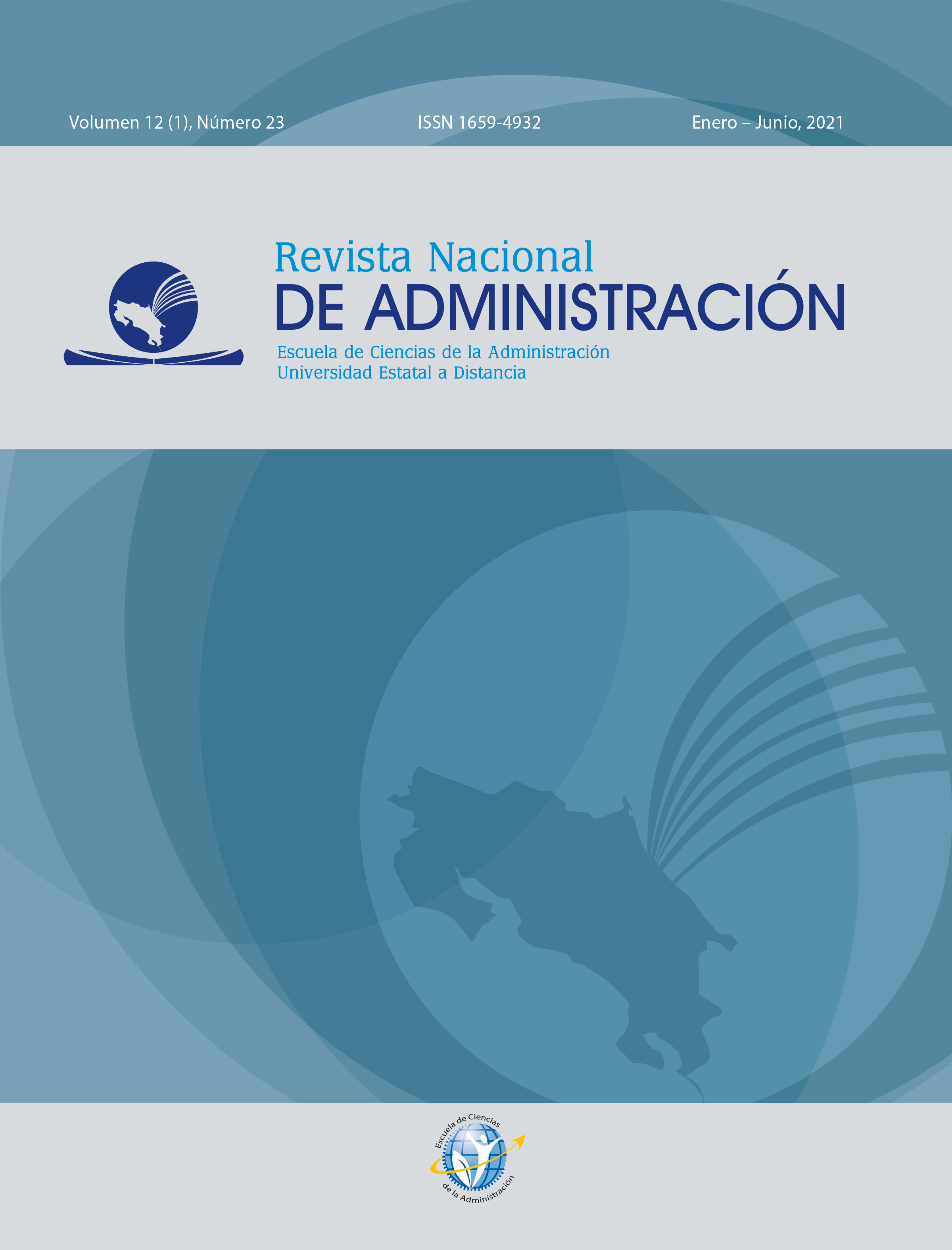CASH MANAGEMENT: HOW DO COUNTRIES PERFORM SOUND PRACTICES?
DOI:
https://doi.org/10.22458/rna.v12i1.3572Keywords:
CASH MANAGEMENTAbstract
Cash management is simply defined as making the right amount of money available at the right time and the right place to meet the government's obligations in the most cost-effective way. The main features of modern cash management are centralized government bank accounts and establishment of a Treasury Single Account, ability to make accurate cash flow forecasts, use of short-term financing instruments, and capacity for the investment of excess cash reserves. Establishing a sound cash management framework with the mentioned features is beneficial not only to the governments and public entities, but also to other stakeholders including the beneficiaries of government payments, banks and lenders. Given the recent COVID-19 (coronavirus) pandemic and locked-down measures introduced in many countries, governments had to deal with unanticipated revenue decreases, and significantly increased public expenditures due to fiscal stimulus packages and pandemic related health expenditures. Therefore, existence of a well-structured government cash management is now even more important than before. This paper aims to explore cash flow forecasting and cash management practices in 24 countries in various regions, at different income levels and technical capacity, and alignment to good practices based on the information provided at the World Bank workshops on Cash Flow Forecasting and Cash Management held in 2018 and 2019. The paper also draws on experiences and practices from other emerging and advanced countries. Cases from different countries indicate that full implementation of modern cash management is still a challenge, even though the Treasury Single Account system is
common in most countries and liquidity buffers were established or increased following the Global Financial Crisis. Cash flow forecasting is an area to improve given the accuracy, horizon and frequency of the projections are frequently limited. Fragmented institutional structure makes cash management even more challenging. Country cases also demonstrate that there is a significant room to strengthen coordination between debt and cash management and the use of short-term instruments to cover cash shortages. Investment of cash balances seems to be a bigger weakness as many countries keep their liquidity buffers in the Central Bank with no remuneration.
References
Agence France Tresor, Managing Government Cash Flows – Performance, https://www.aft.gouv.fr/en/cash-management- performance and Debt Management – General Information – Products, https://www.aft.gouv.fr/en/products- Accessed on May 22nd, 2020
Agência de Gestão da Tesouraria e da Dívida Pública – IGCP, Home Page, https://www.igcp.pt/en/ Accessed May 22nd, 2020
Arslan, Y, Drehmann, M and Hoffmann, B “Central bank bond purchases in emerging market economies” BIS Bulletin No 20, June 2020
AKK, Annual Reports, https://www.akk.hu/en/page/ publications#annual-reports Accessed on May 22nd, 2020
Cangoz, M.C., S. Boitreaud, and C. Dychala (2018) “How Do Countries Use an Asset and Liability Management Approach?” Policy Research Working Paper 8624, The World Bank
Cashin, C., S.Sparkes and D. Bloom (2017) “Earmarking for Health: From Theory to Practice” Health Financing Working Paper, WHO
Cruz, P. and F. Koc (2018) “The liquidity buffer practices of public debt managers in OECD countries” OECD Working Papers on Sovereign Borrowing and Public Debt Management No:9
Department of Economic Affairs of India, Public Debt Management, https://www.dea.gov.in/public-debt- management, Accessed on May 22nd, 2020
Jácome, L., Matamoros-Indorf, M., Sharma, M. and Townsend, S. (2012) “Central Bank Credit to the Government: What Can We Learn from International Practices?” IMF Working Papers 12/16
Investor Relations of Colombia, Publications – Documents of Interest http://www.irc.gov.co/webcenter/portal/IRCEs/ pages_Publicaciones/documentosdeinters Accessed on May 22nd, 2020
IMF (2020) “Fiscal Monitor” https://www.imf.org/en/ Publications/FM/Issues/2020/04/06/fiscal-monitor-april-2020 Accessed on June 18, 2020
Lienert, I. (2009) “Modernizing Cash Management” Technical Notes and Manuals, International Monetary Fund
Miller, M. and S. Hadley (2016) “Cash management in cash- constrained environments” Overseas Development Institute
Ministry of Finance of Brazil, National Treasury, https:// sisweb.tesouro.gov.br/apex/f?p=2501:9::::9:P9_ID_ PUBLICACAO_ANEXO:7141 Accessed on July 1st, 2020
Ministry of Finance of Chile, Investor Relations, https://www. hacienda.cl/english/investor-relations-office/presentations. html Accessed on May 22nd, 2020
Ministry of Economy and Finance of Peru, Public Debt https://www.mef.gob.pe/es/deuda-publica-sp-14826, and Financial Policy Guidelines https://www.mef.gob.pe/en/ financial-strategy Accessed on May 22nd, 2020
Ministry of Treasury and Finance of Turkey, Public Debt Management Report, https://en.hmb.gov.tr/public-debt- management-reports Accessed on May 22nd, 2020
National Treasury of South Africa, Investor Relations, http:// investor.treasury.gov.za Accessed on May 22nd, 2020
Pattanayak, S. and I. Fainboim (2011) “Treasury Single Account: An Essential Tool for Government Cash Management” Technical Notes and Manuals, International Monetary Fund
Pessoa, M. and Williams, M (2012) “Government Cash Management: Relationship between the Treasury and the Central Bank ” Technical Notes and Manuals, International Monetary Fund
Storkey, I. (2001) “International Government Cash Management Practices” www.storkeyandco.com accessed on August 22, 2020
Swedish National Debt Office, About the Debt Office, https:// www.riksgalden.se/en/About-the-Debt-Office/ Accessed on May 22nd, 2020
World Bank, Finance, Competitive and Innovation (FCI) - https://dataviz.worldbank.org/views/FS-COVID19/Overv iew?:embed=y&:isGuestRedirectFromVizportal=y&:displ ay_count=n&:showAppBanner=false&:origin=viz_share_ link&:showVizHome=n
Williams, M. (2004) “Government Cash Management: Good and Bad Practice” http://www.mj-w.net/cac_gov_cash.html accessed on August 22, 2020
Williams, M. (2010) “Government Cash Management: Its Interaction with Other Financial Policies” Technical Notes and Manuals, International Monetary Fund
Published
How to Cite
Issue
Section
License
Copyright (c) 2021 The National Administration Review

This work is licensed under a Creative Commons Attribution-NonCommercial-ShareAlike 4.0 International License.
Aquellos autores/as que tengan publicaciones con esta revista, aceptan los términos siguientes:
- Los autores/as conservarán sus derechos de autor y garantizarán a la revista el derecho de primera publicación de su obra, el cuál estará simultáneamente sujeto a la Licencia de reconocimiento de Creative Commons que permite a terceros compartir la obra siempre que se indique su autor y su primera publicación esta revista.
- Los autores/as podrán adoptar otros acuerdos de licencia no exclusiva de distribución de la versión de la obra publicada (p. ej.: depositarla en un archivo telemático institucional o publicarla en un volumen monográfico) siempre que se indique la publicación inicial en esta revista.
- Se permite y recomienda a los autores/as difundir su obra publicada en la revista a través de Internet (p. ej.: en archivos telemáticos institucionales o en su página web).

